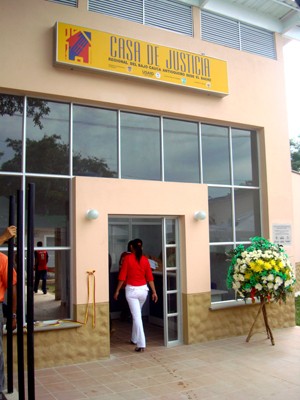
Bello, Chaparral, El Bagre, Remedios, Segovia, and other similar Colombian towns located in rural conflict areas share problems such as poverty, unemployment and serious issues related to domestic violence, gangs, neighborhood conflicts and displaced rural populations.
With the support of USAID, and the commitment of the Colombian government, these municipalities now share a solution that is helping alleviate those problems: Justice Houses - integrated, multi-agency service centers that address pressing community justice needs.
Recognizing the importance of implementing community-based alternative dispute resolutions and conflict prevention programs, USAID started the Justice House Program in 1995. Currently, there are more than 50 well-staffed facilities throughout Colombia. Some are regional Justice Houses that consist of a main house in a medium- size municipality and satellite houses in surrounding rural areas.
Since their inception, Colombian Justice Houses have assisted over 7.8 million citizens, mainly from low income communities.
“The positive impact of the Justice Houses in the reduction of local confl ict and the preservation of peace is immeasurable,” said Adriana Lucía Suárez, coordinator for the Medellín Justice House.
Given the program’s success, many Colombian cities want to establish Justice Houses. To respond to this growing demand, USAID has negotiated a commitment from the Colombian Ministry of Interior and Justice to cofinance the construction of ten new Regional Justice Houses.
Most of the new facilities will serve Afro-Colombian and indigenous communities in rural conflict and post-conflict areas of the departments of Antioquia, Cauca, Chocó, Guajira, Sucre and Nariño. In these regions, strengthening access to justice is critical to achieving a lasting peace in Colombia. The growing level of Colombian government support for Justice Houses is a success for USAID and for the Colombian people.







Comment
Make a general inquiry or suggest an improvement.